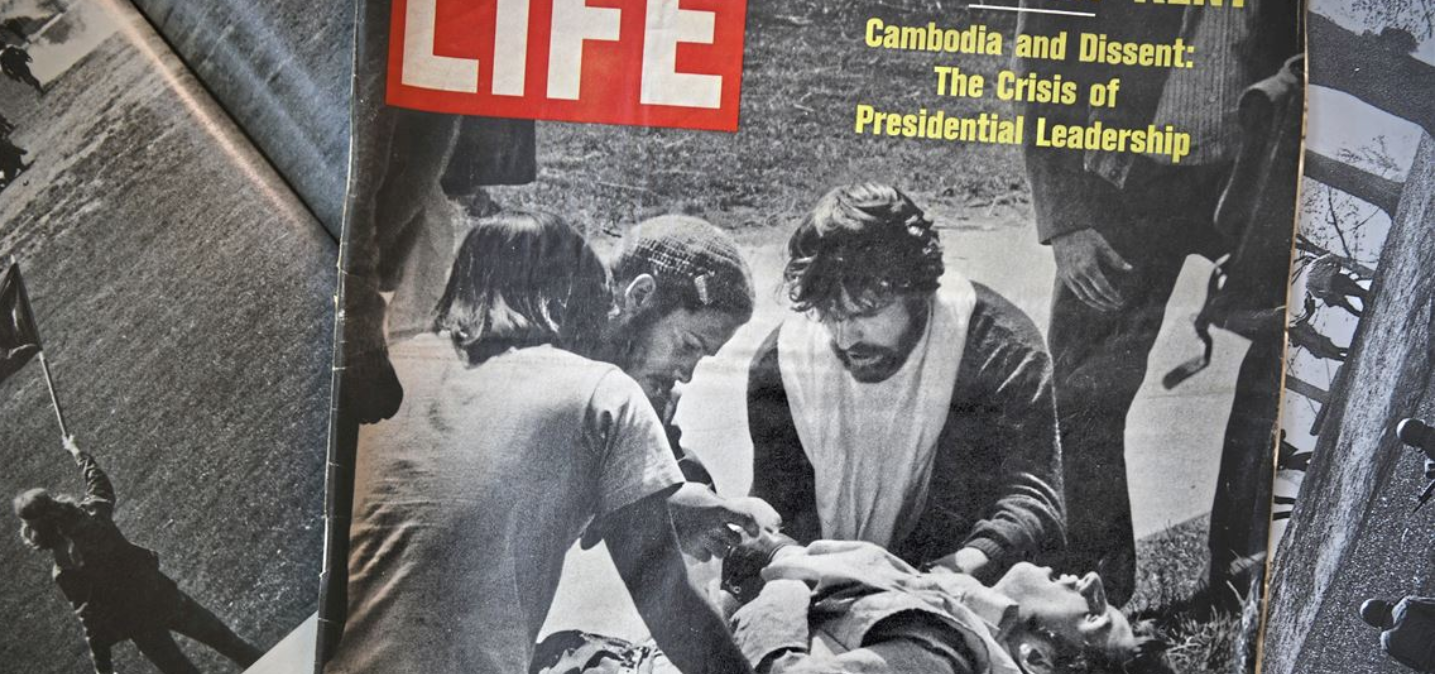


Pulitzer Prize-Winning Coverage of the Kent State Shootings Through the Eyes of a Young Editor
There are a number of days, when the world seemed to come to a full stop, seared into the collective memories of Americans: The end of World War I; the market crash of 1929; Pearl Harbor Day; D-Day; the end of World War II in Europe and the Pacific; the Cuban Missile Crisis; the assassinations of President Kennedy, Bobby Kennedy and Martin Luther King; Neil Armstrong’s walk on the moon; the Munich Olympics; the Challenger explosion; the election of the first African-American president, Barack Obama and, of course, the terrorist attacks on September 11, 2001.
Readers will certainly add other local, regional, national and international events meriting placement on the above list, but only two are instantly known by just a date: 9/11 and May 4th.
Robert Giles, was managing editor of the Akron (Ohio) Beacon Journal on May 4, 1970 when four students were killed at Kent State University during an anti-war protest. National Guard soldiers also wounded nine other people. The paper’s coverage won a Pulitzer Prize for Spot News Reporting. In “When Truth Mattered: The Kent State Shootings 50 Years Later,” published today, Giles offers a gripping account of how he and his staff pursued the truth of the shootings during a time that the nation was sharply divided over the Vietnam War. An excerpt:
As noon approached on Monday, May 4, 1970, students were defiantly gathering on the Commons, the large grassy space at the crossroads of the Kent State University campus.
Among the number were an estimated 300 protesters and curious onlookers. The kids vastly outnumbered the faculty. It was easy to distinguish many of them by their long hair and casual, hippie attire.
The growing assembly was a signal that the rally on the Kent State Commons was going to go ahead, despite Ohio Gov. James Rhodes’ orders to the National Guard to use whatever force necessary to break up the protest.
Rhodes’ mandate was confusing to some but gave authorities little room for flexibility. When someone asked him for a definition of a protest, he replied “Two students walking together.”
For Jeff Sallot, May 4 was a special day. It was his last day of classes at the journalism school.
His days as a campus stringer for the Beacon Journal ended at dawn. By 11 a.m., he was on campus to begin work as a full-time BJ staffer.
Sallot hiked over toward a small group of uniformed men on the edge of the Commons. He found the National Guard brass huddled near the burned-out ROTC building. City police, university police and an officer from the Ohio Highway Patrol mingled with the military officers as they talked.
He didn’t see anyone from the university administration. This was a clear sign to him that the administration was no longer in the communications loop. His was a critical observation: Governor Rhodes had exerted his authority, and his instructions to ban the rally would be carried out.
Jeff walked into the Student Union and shoved coins into a pay phone. Pat Englehart, the state editor, came on the line in the Beacon Journal newsroom and asked for an update.
He told Pat he thought the rally would proceed peacefully. It would be out in the open, exposed by a bright sun shining on the broad expanse of the Commons. The previous nights’ demonstrations had been shrouded by the dark. Daylight would make a difference.
As 12:15 p.m. approached, Sallot calculated his deadline. It would be tight. He needed to make sure he could find a telephone that would enable him to give the newspaper a running account of the demonstration.
For the rest, click here.
Excerpted from “When Truth Mattered: The Kent State Shootings 50 Years Later” by Robert Giles (Mission Point Press, 2020).